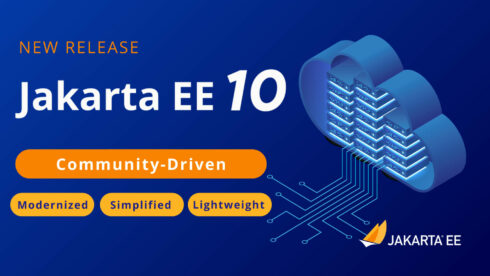
The new Jakarta EE 10 Platform, Web Profile, and Core Profile specifications were released today, introducing new features for building modern, simple, and lightweight Java cloud applications.
"This release is an important release that ushers Jakarta EE into the modern era of microservices and containers," said Mike Milinkovich, executive director of the Eclipse Foundation. Jakarta EE version 10 reflects the work of global contributors led by vendors such as Fujitsu. IBM, Oracle, Payara and Tomitribe. Jakarta EE helped breathe new life into the enterprise Java environment, but this release also implements key innovations for the cloud era that are critical to the future of our industry.
New versions provide new functionality in a list of more than 20 components through version updates. It includes Jakarta Contexts and Dependency Injection (CDI) 4.0, which introduces Jakarta RESTful Web Services 3.1 and standardizes the Java SE Bootstrap API. Also new in Jakarta Security 3.0 are support for OpenID Connect and new features in Jakarta persistence queries. Developers can create Jakarta previews using pure Java.
According to a press release from open source software server provider Payara, Jakarta EE 10 is the first major Jakarta EE of the major namespace update included in Jakarta EE 9.
In Jakarta EE 9, the javax package namespace has been moved to Jakarta via the Jakarta EE 9 framework, the web profile specification, and related TCKs. "With Jakarta EE 10, we will see the first release in a new namespace that will increase functionality for Jakarta EE users," the company said in a statement. The Java JDK package used also changes, from Java 8 to Java 11 at the API level and Java 17 at runtime. For Jakarta EE 8 users, all Jakarta EE importers upgrading to Jakarta EE 10 must change their code to the new namespace."
For example, the release specifies that javax.jms for mail should be jakarta.jms. Java Persistence, commonly used in Hibernate and Spring, has changed from javax.persistence to jakarta.persistence, etc.
Additionally, new Java SE features are now available with Jakarta EE 10, according to Payar. Some are completely futuristic, with new technologies like fork/fusion pools and improved integration with OpenID. Payara Community users can take advantage of these changes immediately thanks to the Payara 6 Community Alpha 4 compatible version of Jakarta 10 .
At the same time, the new base profile includes the Jakarta EE specification for developing microservices in small runtime environments, as well as the new CDI-Lite specification, which provides build-friendly extensions to enable compilation to native code.
Developers can deploy Jakarta EE 10 applications to Java SE 11 and SE 17 to take advantage of new features in SE 9 and SE 11.



